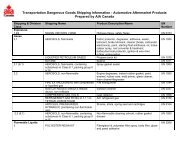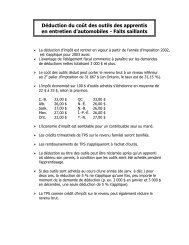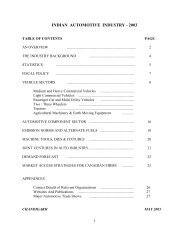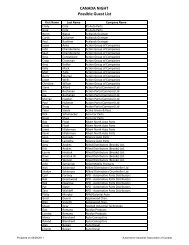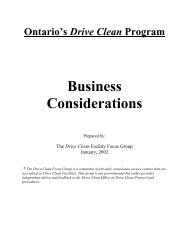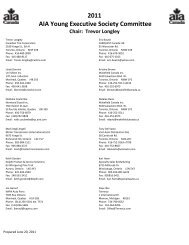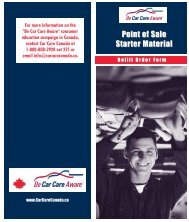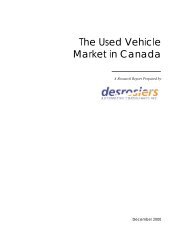Euro 5 Impact Assessment - Automotive Industries Association of ...
Euro 5 Impact Assessment - Automotive Industries Association of ...
Euro 5 Impact Assessment - Automotive Industries Association of ...
You also want an ePaper? Increase the reach of your titles
YUMPU automatically turns print PDFs into web optimized ePapers that Google loves.
3. OBJECTIVES3.1. Policy objectivesThe proposal pursues the following general policy objectives:• Ensuring proper functioning <strong>of</strong> the internal market; and• Providing for a high level <strong>of</strong> environmental protection in the <strong>Euro</strong>pean Union.The specific objectives cover:• Setting harmonised rules on the construction <strong>of</strong> motor vehicles; and• Improving air quality by reducing pollutants emitted by the road transport sector.The operational objectives include:• Setting the next stage <strong>of</strong> emission limit values for passenger cars and light-dutyvehicles in a cost-effective way with specific focus on NO X , PM and HC.3.2. Consistency with horizontal objectives <strong>of</strong> the <strong>Euro</strong>pean Union3.2.1. Lisbon strategyThe policy objectives <strong>of</strong> <strong>Euro</strong> 5 are in line with the aims <strong>of</strong> the <strong>Euro</strong>pean Union’s Lisbonstrategy, which has three pillars, namely:• Making <strong>Euro</strong>pe a more attractive place to invest and workThe objectives <strong>of</strong> <strong>Euro</strong> 5 are supporting the integrity <strong>of</strong> the single market, providing foruniform standards for new vehicles sold throughout the <strong>Euro</strong>pean Union. It means that theautomotive industry in <strong>Euro</strong>pe is required to meet uniform regulations throughout theInternal Market <strong>of</strong> the EU. This will ensure that the <strong>Euro</strong>pean car industry remainscompetitive and an attractive industry to invest in. The proposal will also contribute toenhancing its competitiveness on world export markets.The CAFE Programme has shown that air pollution has significant effects onproductivity. 9 For example, the CAFE Cost-Benefit Analysis 10 assessed the effects <strong>of</strong> airpollution on activities <strong>of</strong> the population, namely by estimating the Restricted ActivityDays (RADs) and the Work Loss Days (WLDs) for each Member State that areattributable to air pollution. By seeking to reduce air pollution, the policy objectives <strong>of</strong><strong>Euro</strong> 5 contribute to increasing productivity in the <strong>Euro</strong>pean Union.• Knowledge and innovation for growthNew emission limits for vehicles encourage the development and implementation <strong>of</strong> newenvironmental technologies. The policy objectives therefore promote innovation andtechnological development, enabling the EU to keep pace with the technology910Methodology for the Cost-Benefit analysis for CAFE, Volume 2: Health <strong>Impact</strong> <strong>Assessment</strong>, AEATechnology Environment, February 2005, p. 85CAFE Cost Benefit Analysis: Baseline Analysis 2000 to 2020, AEA Technology Environment, April2005, p.18, p. 608



